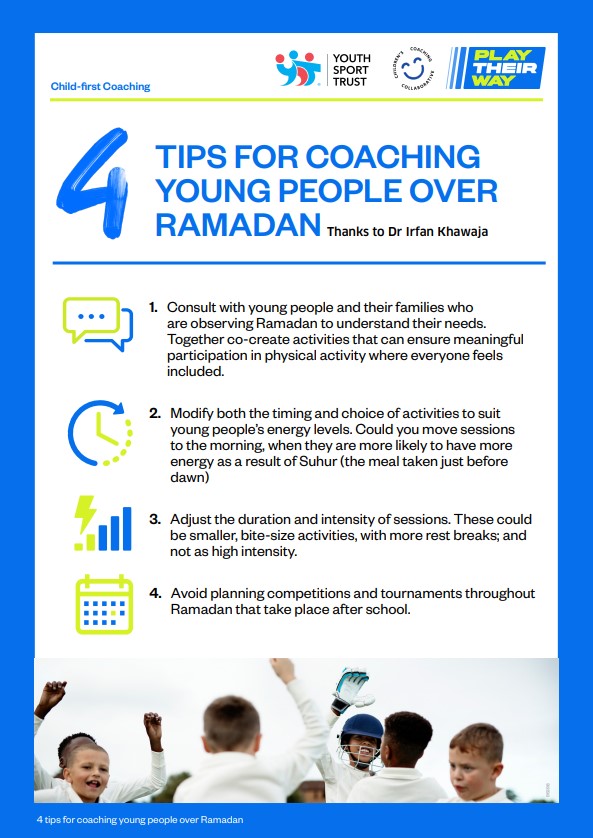Our cookies
We use essential cookies to make our website work smoothly for you. To make sure we're always improving, we'd like to use analytics to track how people use the site. We won't set non-essential cookies unless you give us permission. You can find more information about all the cookies we use in our Privacy and Cookie Policy.
Some cookies are a must for our website to function properly. If you turn off essential cookies, it may affect how you experience our site.
The non-essential cookies we use help us understand how you use our website and make improvements to enhance your experience.
South Asian Girls in Sport: How We Can Create More Inclusivity, Openness and Opportunities
Zoya Zia who is a Senior Impact and Evaluation Officer at Chance to Shine talks to Play Their Way about inclusive and openness in the sports arena.

Written by Samia Aziz
Zoya Zia, Senior Impact and Evaluation Officer at Chance To Shine believes fiercely in the need to create a more inclusive and open arena for sports and physical activity, giving all children the same opportunities to play, be active and experience the joys, teamwork and rewards of sports.
Unfortunately, the picture is not so rosy for all children, when it comes to their participation in sports and physical education. The latest Sport England Active Lives survey reveals that the gap between activity levels among Asian and Black children and young people and those of all other backgrounds has widened over the last five years, and that girls from Asian descent in England are the least likely to be active.
The Play Their Way campaign, through the Children’s Coaching Collaborative is aiming to address these concerning statics. We strongly believe in the right and importance of all children to play and to decide what that play looks like. We believe that by having a child-first approach to coaching, children and young people will have a voice, choice and ability to decide their journey when participating in sports and physical activity. This will help cultivate a lifelong and sincere love for being active, helping to lead to a healthier and happier life.
Where to begin
These statistics are not merely about a preference of activity, and nor do they reflect a lack of talent from black and South Asian communities in the UK, especially when it comes to South Asian girls. Zoya believes that this issue is multi-layered, and requires a response that is multi-faceted to address this, understanding where any blocks, reservations or issues may lie, and how we can help open up the field of sports to more girls from black and brown backgrounds.
Understanding the reasons behind the stats
It is important to remember that no group is a singular identity, and within the South Asian community, girls will have a plethora of experiences, for a huge number of reasons. However, there are some experiences that are very common among South Asian girls, which lead to the low number of girls taking part in sports and physical activity.
The first thing to do, is to understand the complexity in a South Asian girl’s identity, as she deals with both general gendered ideas and expectations, as well as nuances within South Asian cultures and households.
A lot of pressure is on South Asian girls to do a lot of things and behave in certain ways. There are a lot of cultural expectations that focus on doing well at school, and highlight differences between boys and girls, where boys do sports and girls focus on school."
Zoya Zia, Chance to Shine - Senior Impact and Evaluation Officer
These expectations don’t just come from Asian cultures, but come from society at large and all girls experience some forms of gendered expectations. For Asian girls, this goes even further as it is tied into cultural experiences,” says Zoya.
In some cases, culture and faith can impact the way girls feel about the clothes they wear while taking part in sports, mixed-gendered environments and even the timing of coaching sessions.
Representation and inclusivity matters
For many girls who are interested in sports, finding role models to aspire to and to learn from, is an important part of their journey.
“But young Asian girls don’t see themselves in sports. This isn’t even just focused on professional sports, but overall, in other roles such as coaching and refereeing. Without good role models, young South Asian girls feel excluded. It is important that we let them know there is a space for them,” says Zoya.
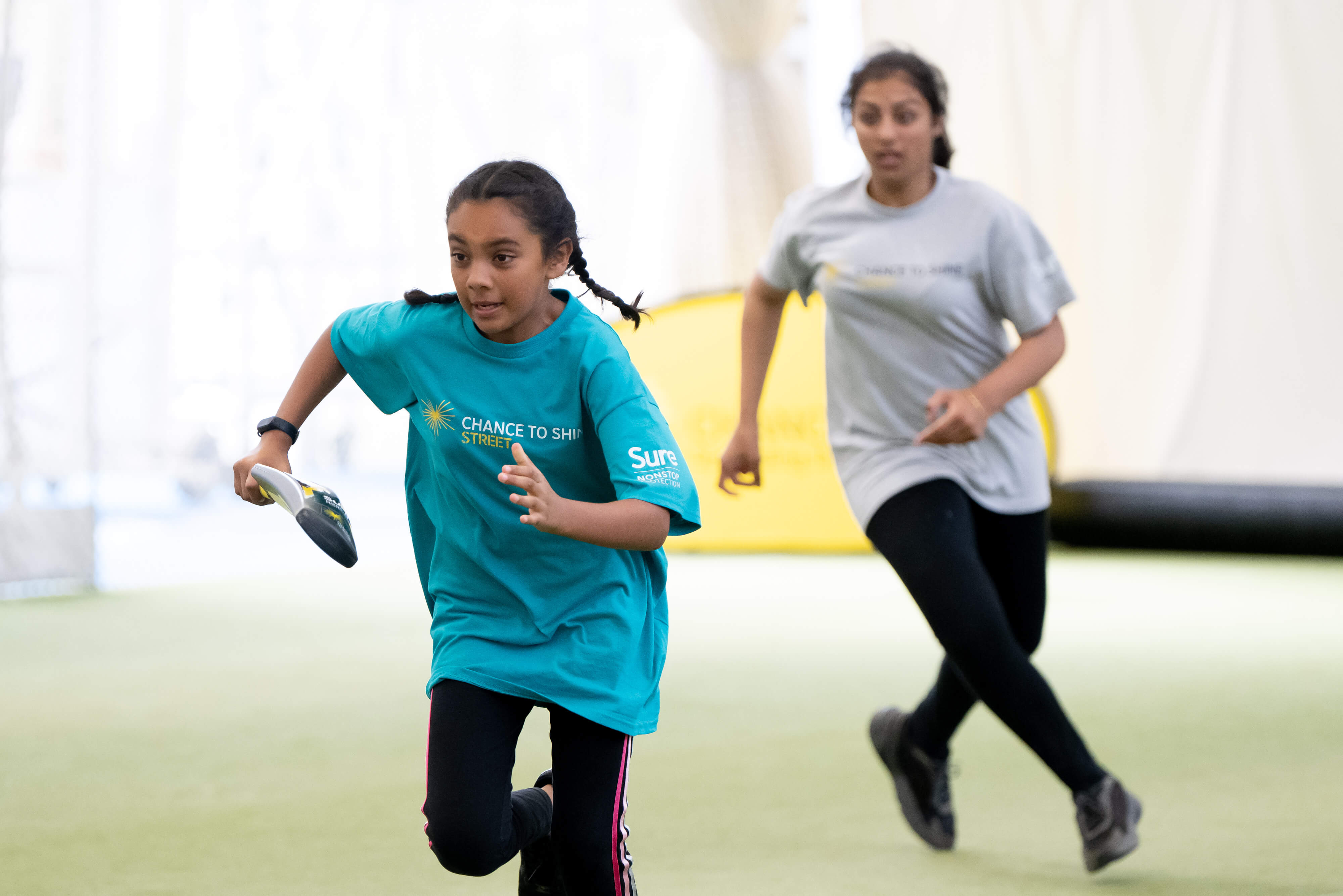
This issue is tied up in the fact that diversity is not normalised within most sports teams. Today, the majority of sports teams require players to all wear the same kit, usually including shorts and t-shirts. This doesn’t always feel appropriate for some South Asian young girls, drawing them further away from the sport.
It is important for coaches to try to be understanding and sensitive to this as much as possible, and offer a variety of clothing including long-sleeved tops and tracksuit bottoms.
“Similarly, at professional levels, a lot of sports teams do not allow women to wear the hijab, as was the case with talented Bilqis Abdul-Qaadir, a professional basketball player from America. She had to give up sports because she was not allowed to cover her head. Now she works with young girls to empower them to advocate for what they need. While campaigns like Sweaty Betty are now trying to be more inclusive and show diversity by highlighting hijab-wearing athletes, there is still a long way to go until these ideas are normalised,” says Zoya.
Racism in the sports industry
Over the last few years, we have seen some devastating public cases of racism in the sports industry, especially in cricket and football, where players have been verbally abused and worse. There is no doubt that this impacts the way that young South Asians view sports spaces.
“I think we have to understand that the context of the real world, such as racism and Islamophobia, definitely have an impact in the game. Some people like to keep these two things separate, but this is unhelpful...
We have to be honest about some of the issues with racism within sports, and this then needs to be addressed and dealt with accordingly,"
Zoya Zia, Chance to Shine - Senior Impact and Evaluation Officer
Early years PE and sports
One way to promote sports and physical education among South Asian girls is to really consider how they are involved from a young age. Often negative experiences at a young age of struggling to keep up, bullying or feeling excluded can mean young girls feel more alienated. The solution is to change the mindset away from competition, and to keep it fun, says Zoya:
“We know that sport drops off in secondary school. If we don’t get primary right, they’re even more likely to drop off at the secondary stage. They don’t have to be the next star – it’s about adopting the right mindset. It’s about being healthy, active, and having fun.”
“We should be focusing on play, not competition, by aiming for personal bests, promoting teamwork and continued physical activity. This is something we do a lot at Chance To Shine, rotating children across different activities so they get to try everything. We need to ensure that children have equal opportunities, by accommodating for different abilities and strength, not treating all children like a monolith.”
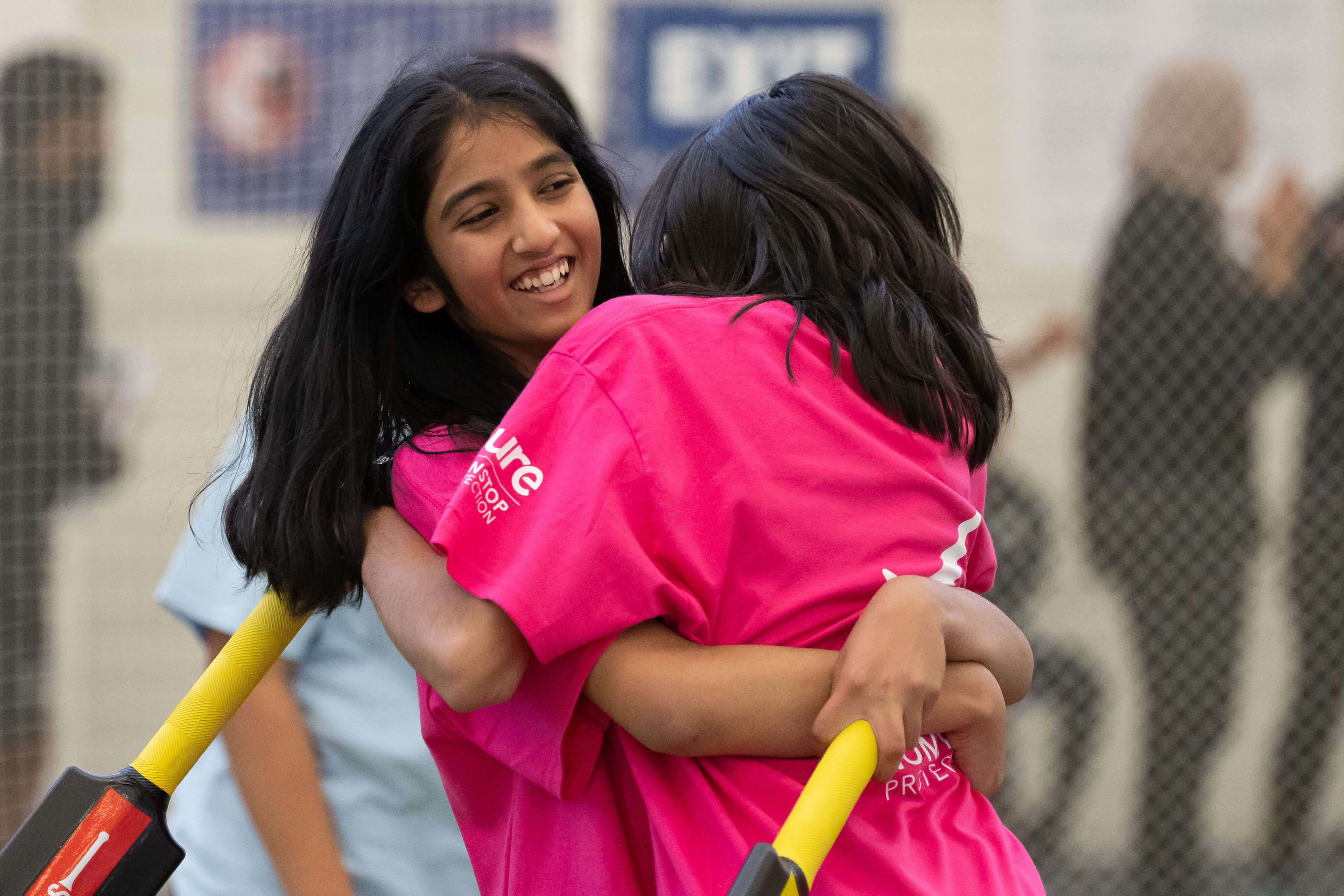
These ideas are also integral to Play Their Way, where child-first coaching empowers children to use their voices and tailoring sports to children’s needs and preferences. This means more children and young people will enjoy being active, and stay active for longer, contributing to healthier and happier futures.
The harms of losing physical activity
The coronavirus pandemic taught us many things, and among that was that when we have a dip in our physical movement, it has a knock-on effect on our mental health. The pandemic saw a huge spike in anxiety and depression, as well as the physical tolls on our bodies. This is particularly important as we know that rates of poor mental health are higher among South Asian communities, with recent reports revealing that almost two-thirds of South Asian people in England experienced mental health problems. There are also other health conditions more prevalent in the South Asian community including diabetes, high blood pressure and early heart attacks.
“We need to stay physically active as it is connected to other parts of the human body. It’s also a way to foster community and connection. There are so many benefits of being part of a team, and sports and physical activities teach us about perseverance, resilience and so much more,” says Zoya.
As coaches, what can we do?
Zoya explains that there is a real need to gain the trust of the communities. Part of gaining trust is to make real efforts to understand where the parents and guardians of these young girls are coming from:
“It might be that parents have had negative experiences of physical education or sports in their own lives, and so are now reluctant to allow their children to participate fully in these activities...
They may have also experienced racism and encountered a range of blockages when it comes to sport, and so are now less likely to send their children to these places, thinking that they may also experience the same."
Zoya Zia, Chance to Shine - Senior Impact and Evaluation Officer
Winning over parents is the first big step forwards. This comes from meeting them where they are, and understanding the particular nuances and needs of the community.
Girls might need a girls-only space for coaching, being uncomfortable to play with boys. Similarly, they may prefer working with a female coach, and ideally someone from a similar background.
Ramadan and fasting
During the month of Ramadan, Muslims all over the world fast, abstaining from food and drink from sunrise to sunset every day for 30 days. Many young South Asian girls are likely to be fasting, but Zoya says, this does not mean they should have to, or need to, stop sports or physical activities. Here are some tips Zoya suggests:
- Talk to young people about their fasting plans and general energy levels. While some young people may decide to take a break during Ramadan, others would prefer to continue with their sports. Find out about the times of the day they feel most energised, what time they break their fasts, and if any particular form of exercise is more difficult than others while fasting.
- Be flexible and make accommodations accordingly. Where possible, this might mean changing the timing of training sessions to earlier or later in the day, or changing the length of the session.
- Offer more breaks during any training sessions to those fasting, which will help with them not getting too thirsty.
- Try to avoid arranging any full matches or games during Ramadan, allowing all players to be at their physical peak.
We believe these tips form an approach that is integral in upholding the fundamental rights of all children and young people in sports and activity. Children have the right to play, but also have the right to determine what that play looks like. One key right of children is the right to have to express their own views, which are then acted on in a meaningful way. This means it is essential to create spaces to ask children and young people about their views, and make changes accordingly.
Hopes for the future
The potential of young people in the UK is huge, and we have such a bright and hopeful future ahead of ourselves. There is still so much to do in creating a more inclusive, open and fair sports industry, but Zoya is hopeful:
“I really hope that we don’t just view young South Asian girls as a tick-box exercise when it comes to diversity in sports. It is so important that we keep tackling societal issues. I really hope that the industry creates more opportunities for South Asian girls, and include members of these communities around the table to inform programmes so that are inclusive, open and reflective of the communities they are for.”
If you’re a coach, we’d love to hear from you! Join our hub today and share your experiences, so we can continue to learn from one another and ensure that all children, regardless of background and ability have access to sports and physical activity that is inclusive, empowering and led by them.
Other resources you may like...
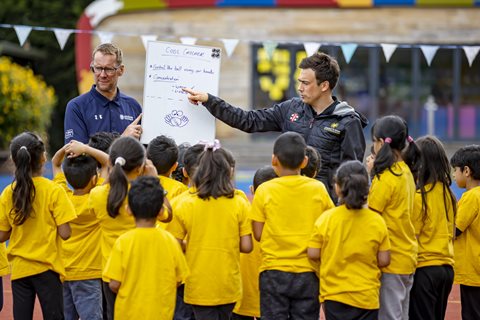
Planning sessions that support children's holistic development
READ MORE
Play Their Way Podcast - Zoya's Episode
LISTEN HERE
Understanding the Nuances of Coaching Girls in Sport
READ MOREAbout the contributor
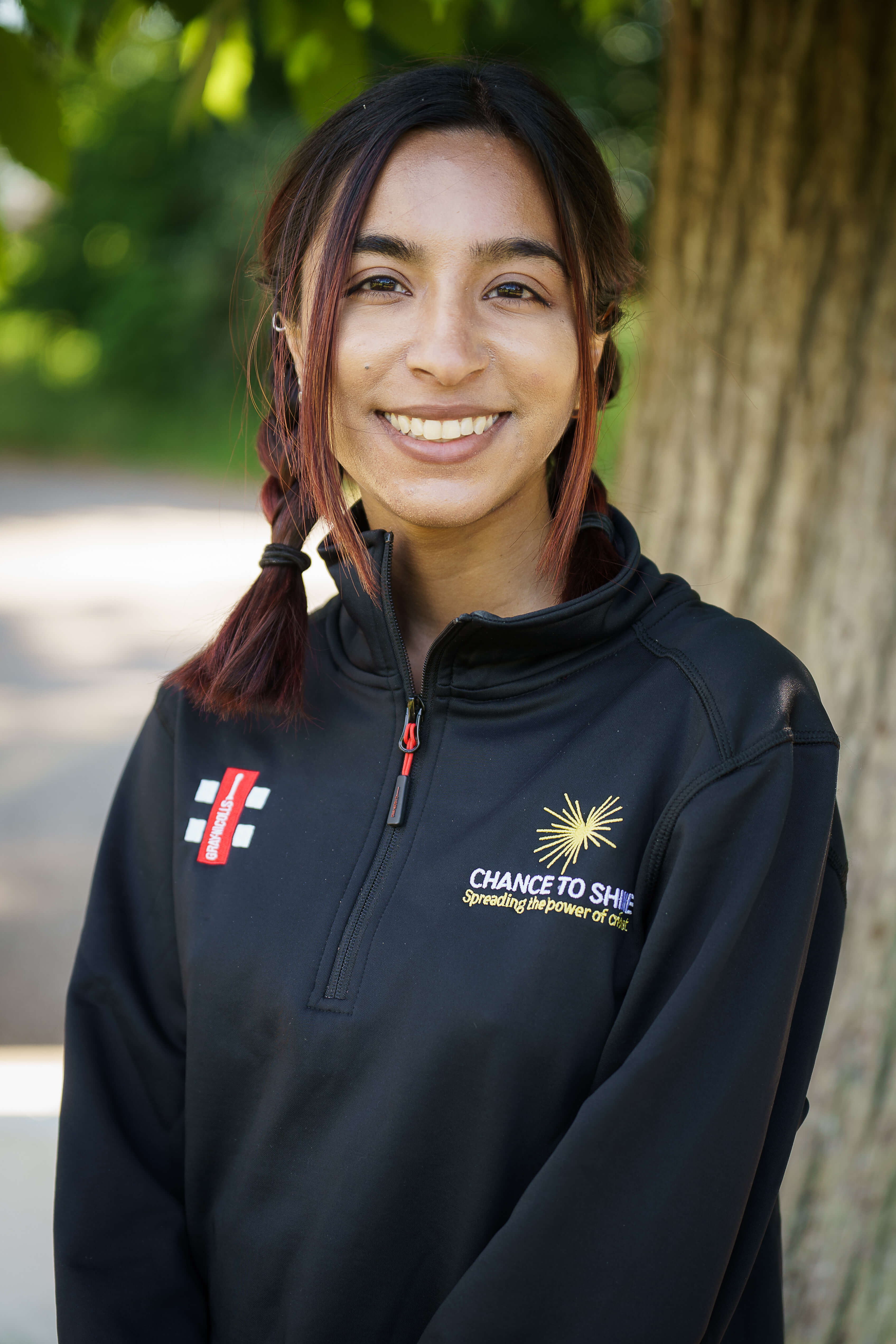
Zoya Zia is the Senior Impact and Evaluation Officer at Chance to Shine, one of the members of the Children’s Coaching Collaborative (17 organisations which drive the Play Their Way movement). Originally from Pakistan and Texas, Zoya has found her place in between. She has an MSc Human Rights and Politics from the London School of Economics, and is interested in the relationship between sport and children's rights worldwide.
SHARE THE MOVEMENT
Help spread the word by sharing this website with fellow coaches!

